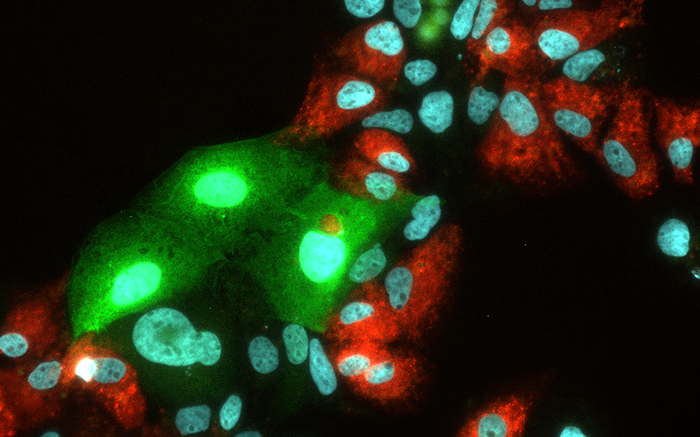It is well known that co-infections with hepatitis viruses do exist. “However, the co-infection of hepatitis C and E has not yet been systematically researched,” says professor Thomas Burkard. “Even though the possibility always looms that a simultaneous infection with two viruses could perhaps be particularly dangerous.”
To find out more about simultaneous infection with the hepatitis C (HCV) and hepatitis E virus (HEV), the researchers infected liver cells in cell culture with both pathogens in the first step. It turned out that HCV is able to suppress an infection with hepatitis E. The team wanted to find out why.
“HCV consists of ten proteins,” explains Burkard. “By producing individual ones in excess, we were able to study their effect.” This allowed the researchers to find that a single viral protein – called NS3/4A – successfully suppressed the replication of hepatitis E viruses in cell culture. “It seemed that co-infection with both viruses was only possible to a very limited extent."
Experiments in animal models, however, presented a different pattern: genetically modified mice that have a human liver could become infected with both viruses. However, the infections proceeded in different ways depending on which one the mice were exposed to first. If HEV was present first, HCV could not successfully infect the animals. If HCV was present first, the infection course with HEV was often delayed.
“Here, HCV did not turn out to be as dominant as in cell culture,” says Burkard.
In-depth analyses of the liver cells should now shed light on the underlying causes.
“Perhaps we will only find islets that are infected with one or the other virus,” he says. “In any case, it is clear that the two viruses affect each other.”
